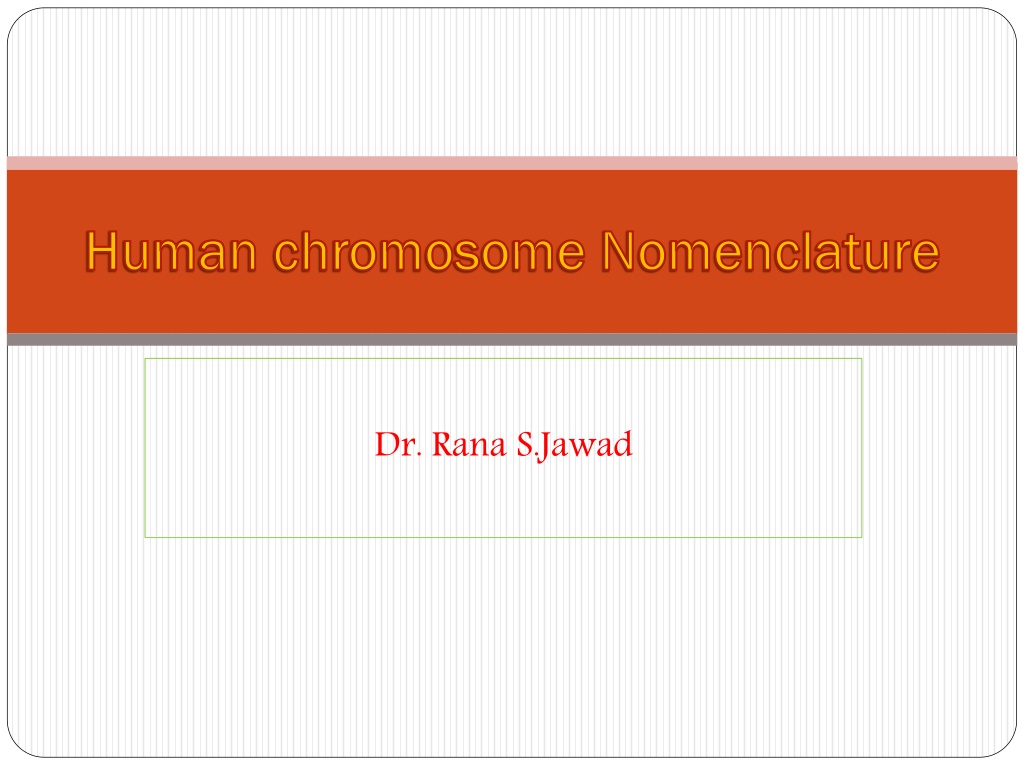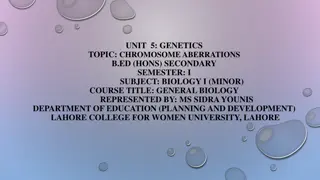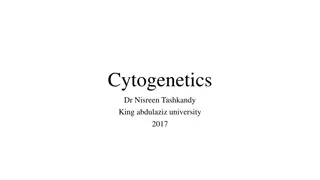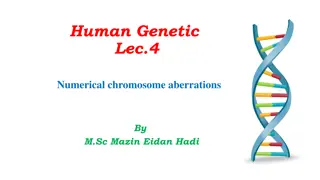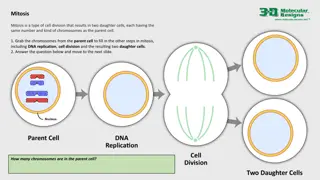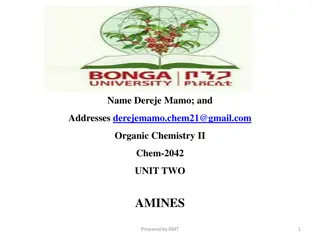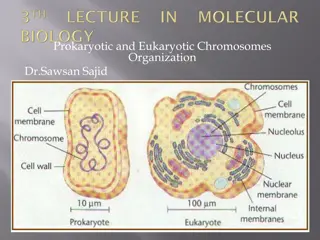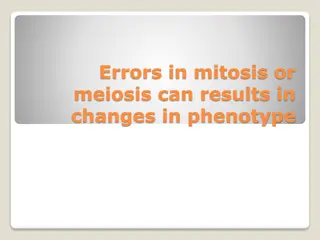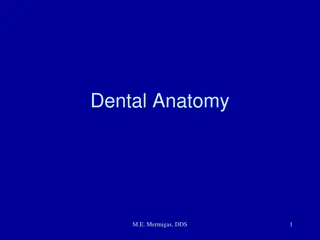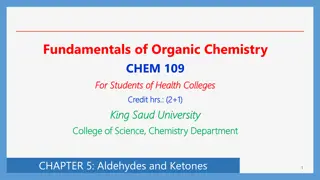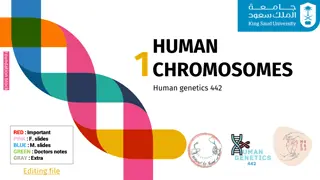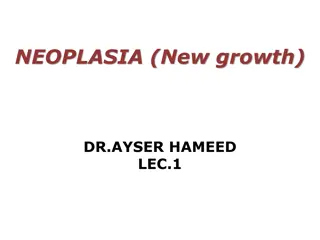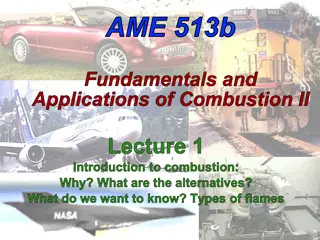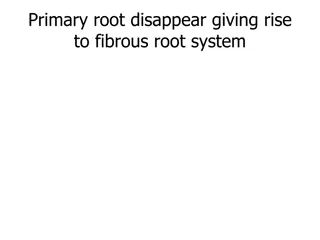Understanding Human Chromosome Nomenclature and Structure
In humans, each cell typically contains 23 pairs of chromosomes, with 22 autosomes and one pair of sex chromosomes. Chromosomes can be classified based on their structure, centromere position, and banding patterns. The location of the centromere on each chromosome is important for gene mapping and identification. Each chromosome has distinct arms (p and q) divided into cytogenetic bands. This information is crucial in understanding genetic variations and diseases.
Download Presentation

Please find below an Image/Link to download the presentation.
The content on the website is provided AS IS for your information and personal use only. It may not be sold, licensed, or shared on other websites without obtaining consent from the author. Download presentation by click this link. If you encounter any issues during the download, it is possible that the publisher has removed the file from their server.
E N D
Presentation Transcript
Human chromosome Nomenclature Human chromosome Nomenclature Dr. Rana S.Jawad
In humans, each cell normally contains 23 pairs of chromosomes, for a total of 46. Twenty-two (22) of these pairs, called autosomes, look the same in both males and females. The 23rd pair, the sex chromosomes, differ between males and females. Females have two chromosome, while males have one X and one Y chromosome. copies of the X
A chromosome may be: metacentric, with its centromere in the middle; submetacentric, with the centromere closer to one end of the chromosome acrocentric, in which the centromere is near one end of the chromosome and the short arm is essentially comprised of repetitive DNA that constitutes the satellites and nucleolar organizing regions
Chromosomes 1 and 3 are examples of metacentric chromosomes, chromosomes 4 and 5 are large submetacentric chromosomes, and chromosomes 13 15 are considered medium sized acrocentric chromosomes
Each chromosome has a constriction point called the centromere, which divides the chromosome into two sections,or arms. The short arm of the chromosome is labeled the p arm. The long arm of the chromosome is labeled the q arm.
The location of the centromere on each chromosome chromosome its shape, and can be used to help describe the location of specific genes. gives characteristic the
Each chromosome arm is divided into regions, or cytogenetic bands, that can be seen using a microscope and special stains. The cytogenetic bands are labeled p1, p2, p3, q1, q2, q3, etc., counting from the centromere out toward the telomeres. At higher resolutions, sub-bands can be seen within the bands. The sub-bands are also numbered from the centromere out toward the telomere.
For example, the cytogenetic map location of the CFTR gene is 7q31.2, which indicates it is on chromosome 7, q arm, band 3, sub-band 1, and sub-sub-band 2. The ends of the chromosomes are labeled ptel and qtel. For example, the notation 7qtel refers to the end of the long arm of chromosome 7.
The commonly used G-, Q-, and R- banding techniques show bands distributed along the entire chromosome, whereas the C-, T-, or NOR-banding techniques are used to identify speci fi c chromosome structures that are heritable features
A band defined as a part of the chromosome that is clearly distinguishable from its adjacent segments based on its staining properties. band is As a general rule, a chromosome band contains ~5 10 mega bases (Mb) of DNA
Giemsa or G-banding is the most common banding method employed in North American cytogenetics laboratories. Facilitate the identification of structural abnormalities G-dark (positive) bands are AT rich, gene poor, and late replicating. The early replicating G-light (negative) bands are GC rich, gene rich, and late replicating
C-banding is particularly useful when identifying the morphologically variable heterochromatin regions of the Y chromosome and chromosomes 1, 9, and 16. Reverse or R-banding are useful for analyzing deletion or translocation that involve the telomeres of chromosome
